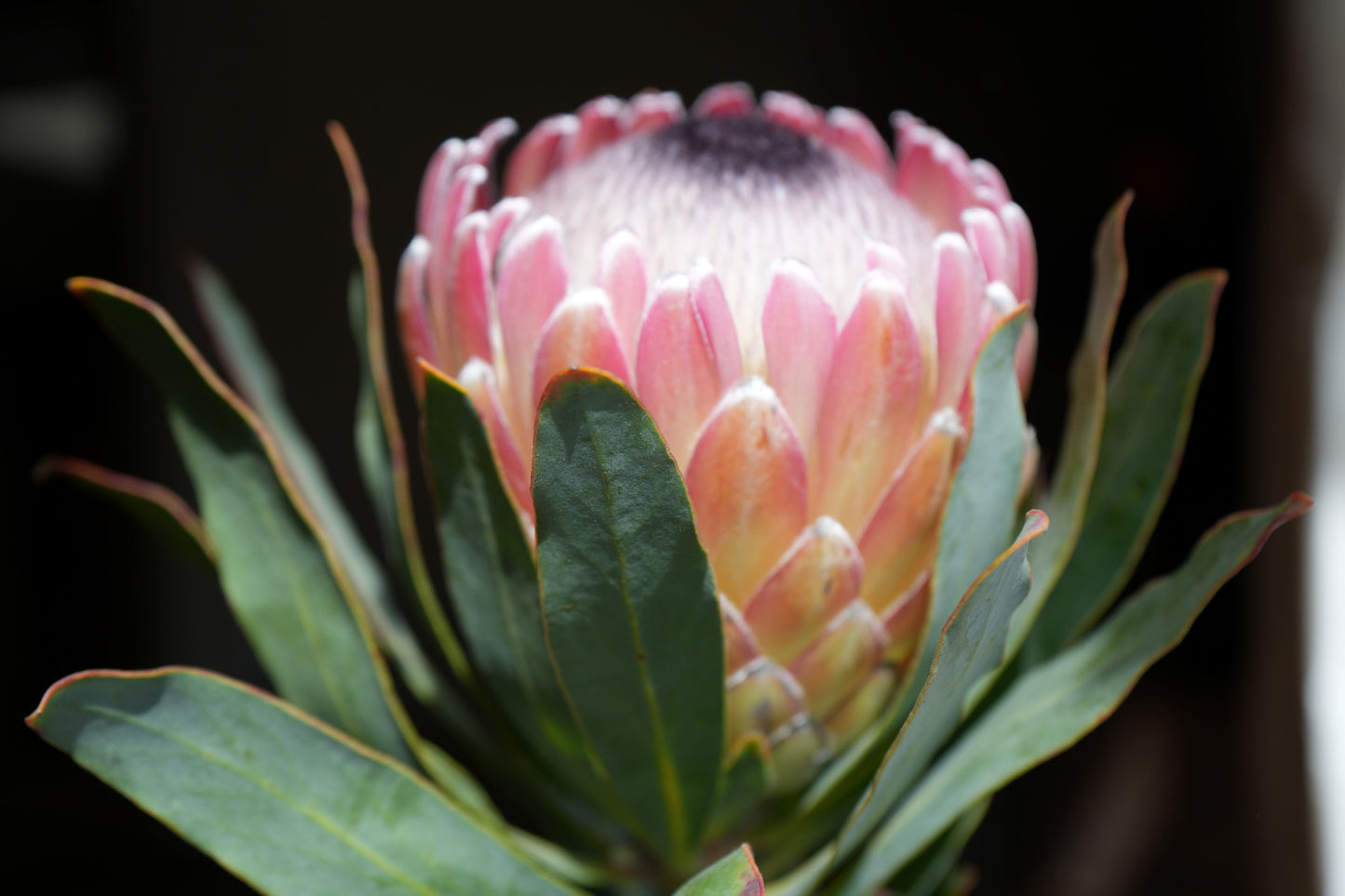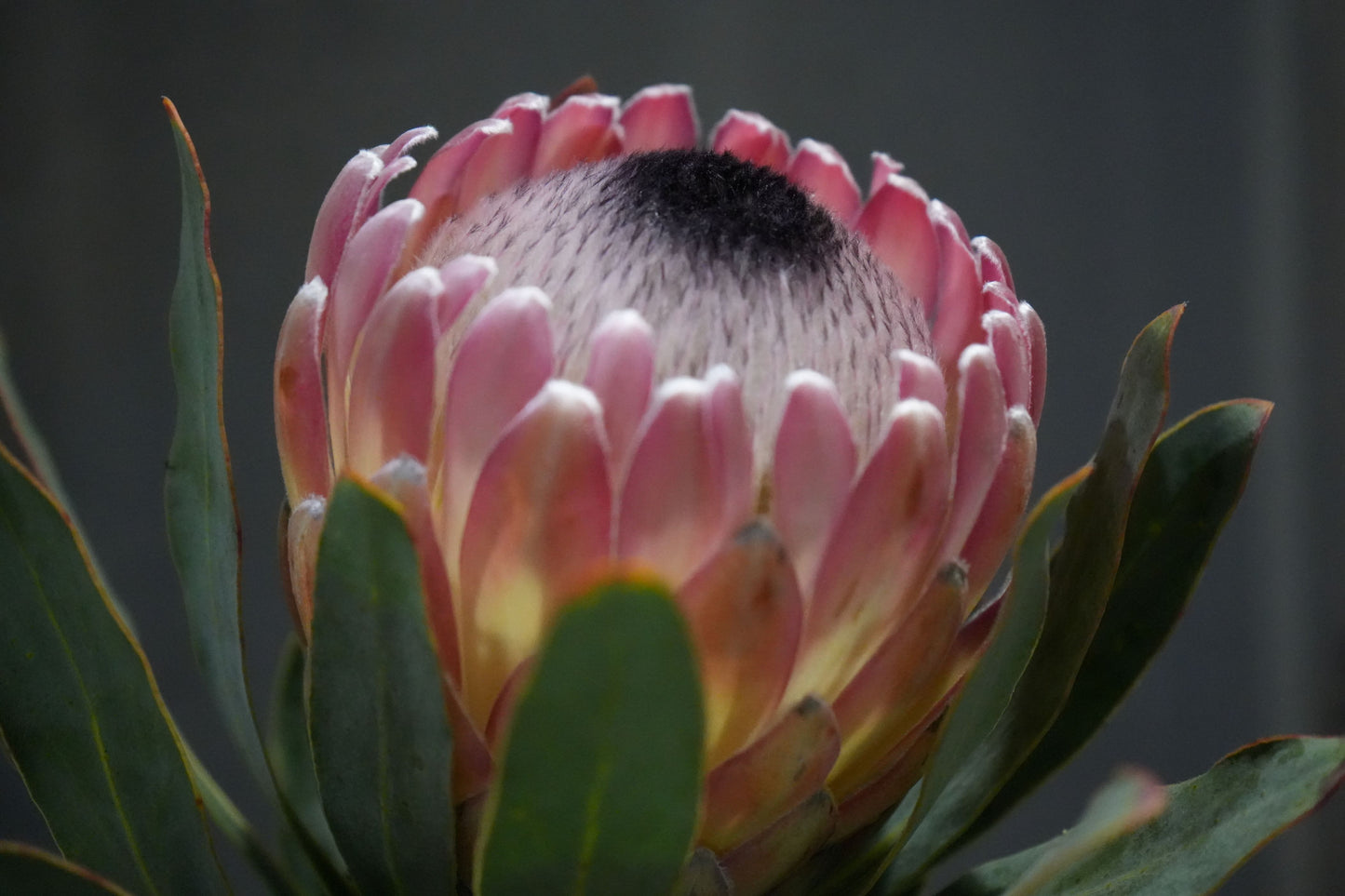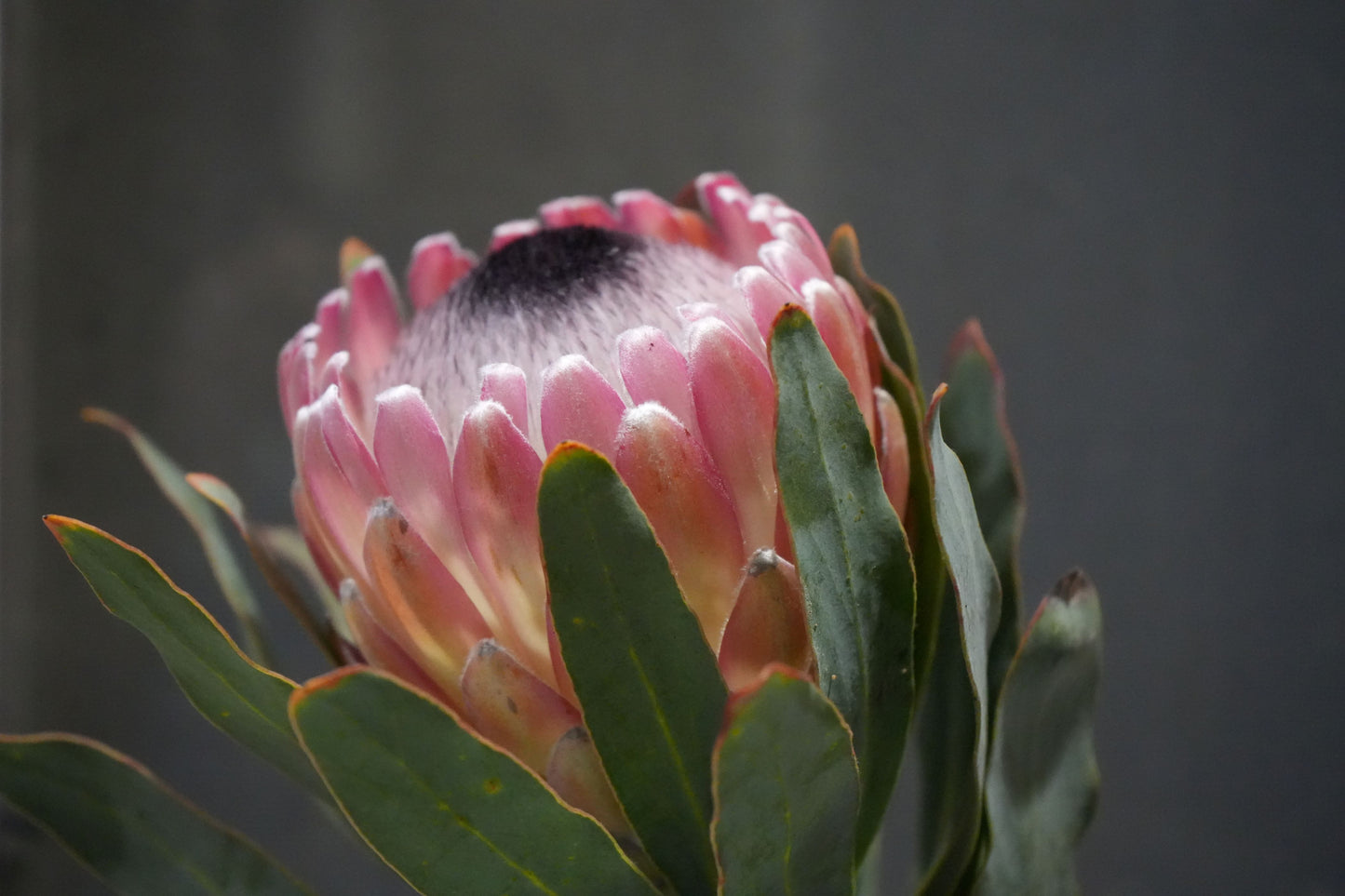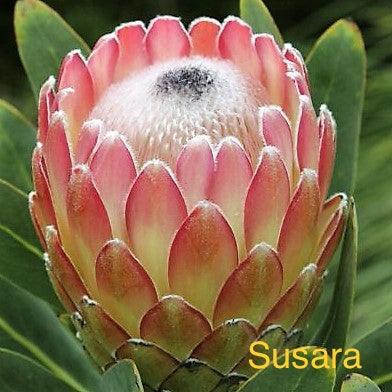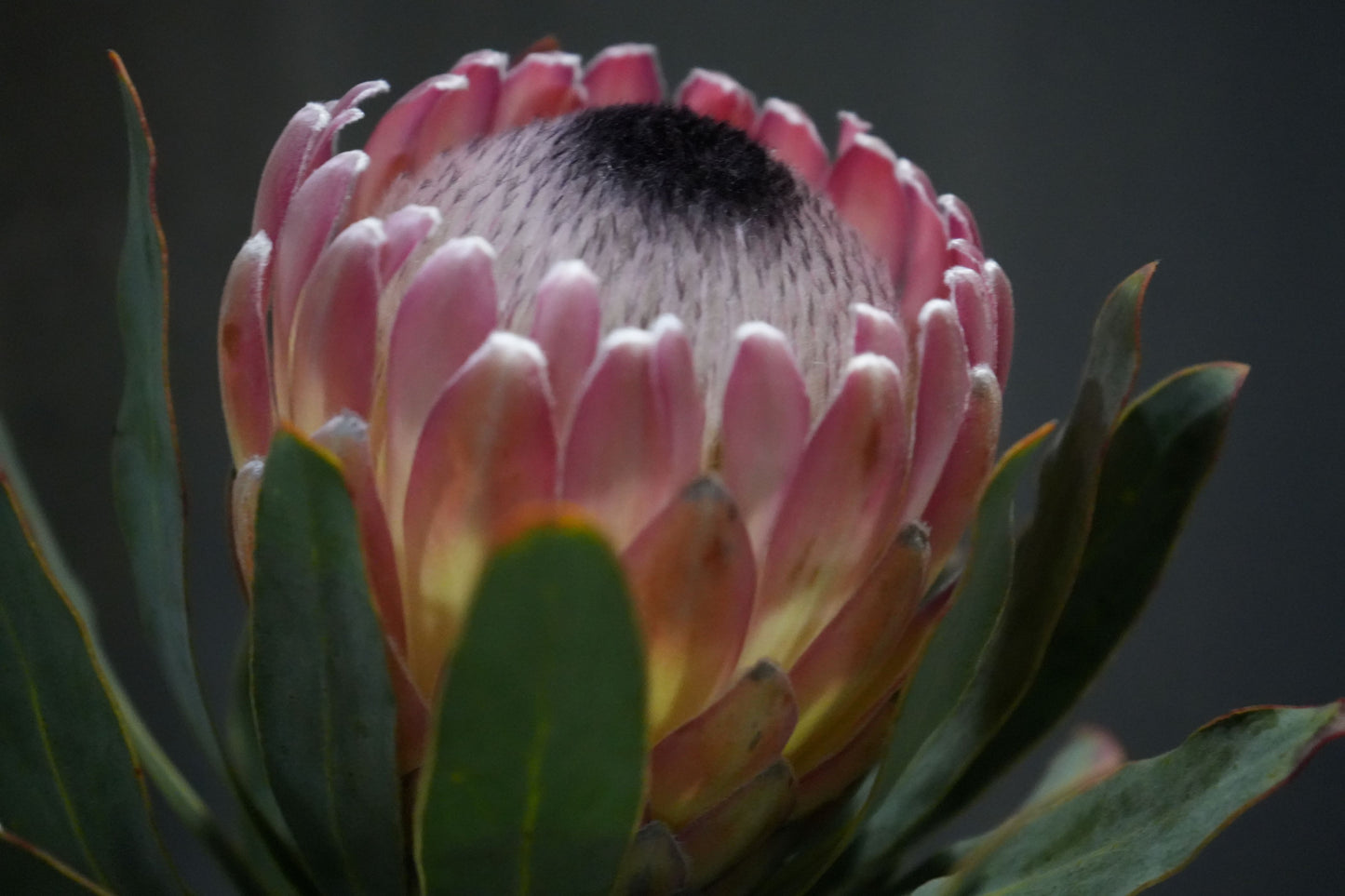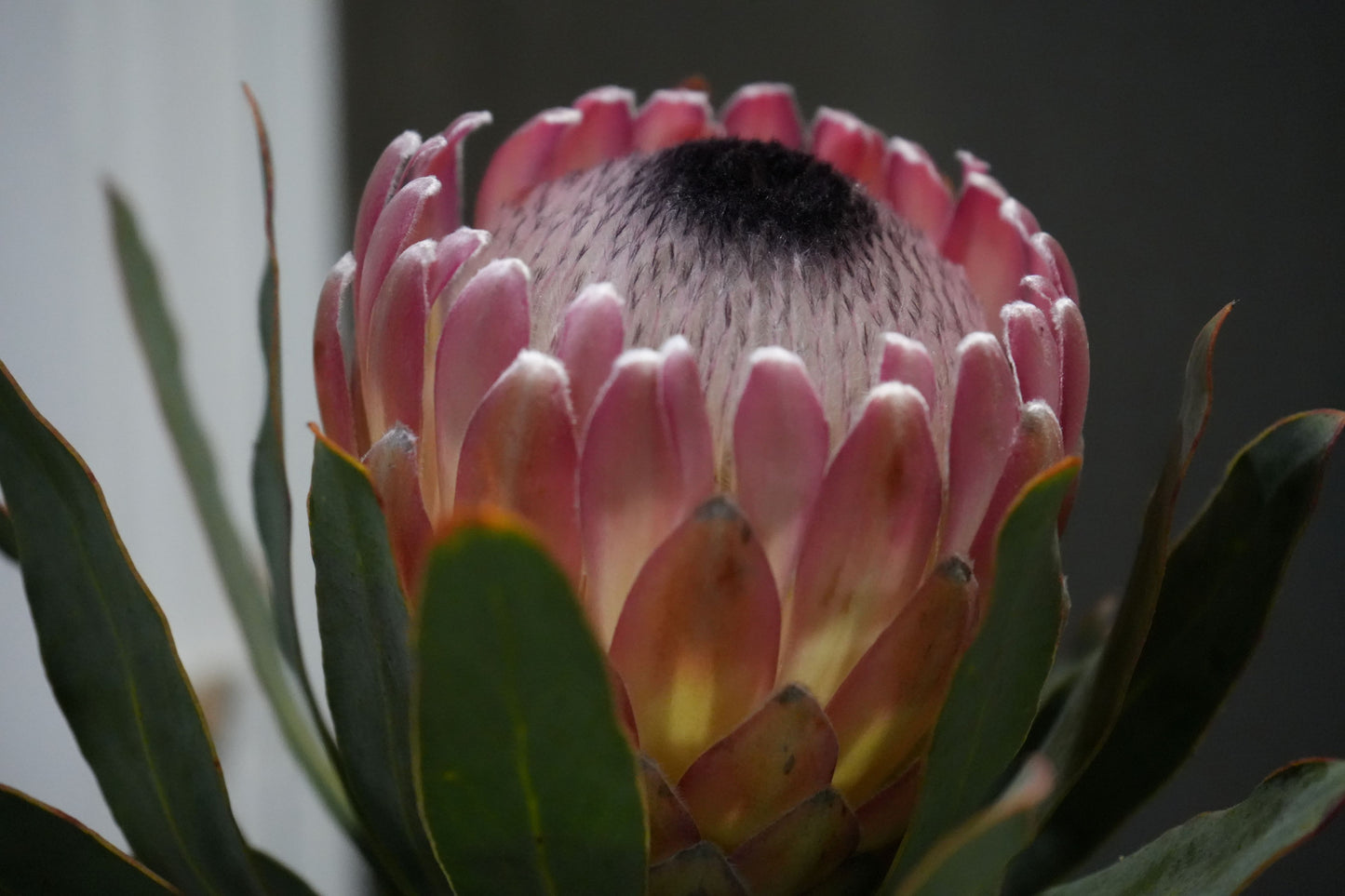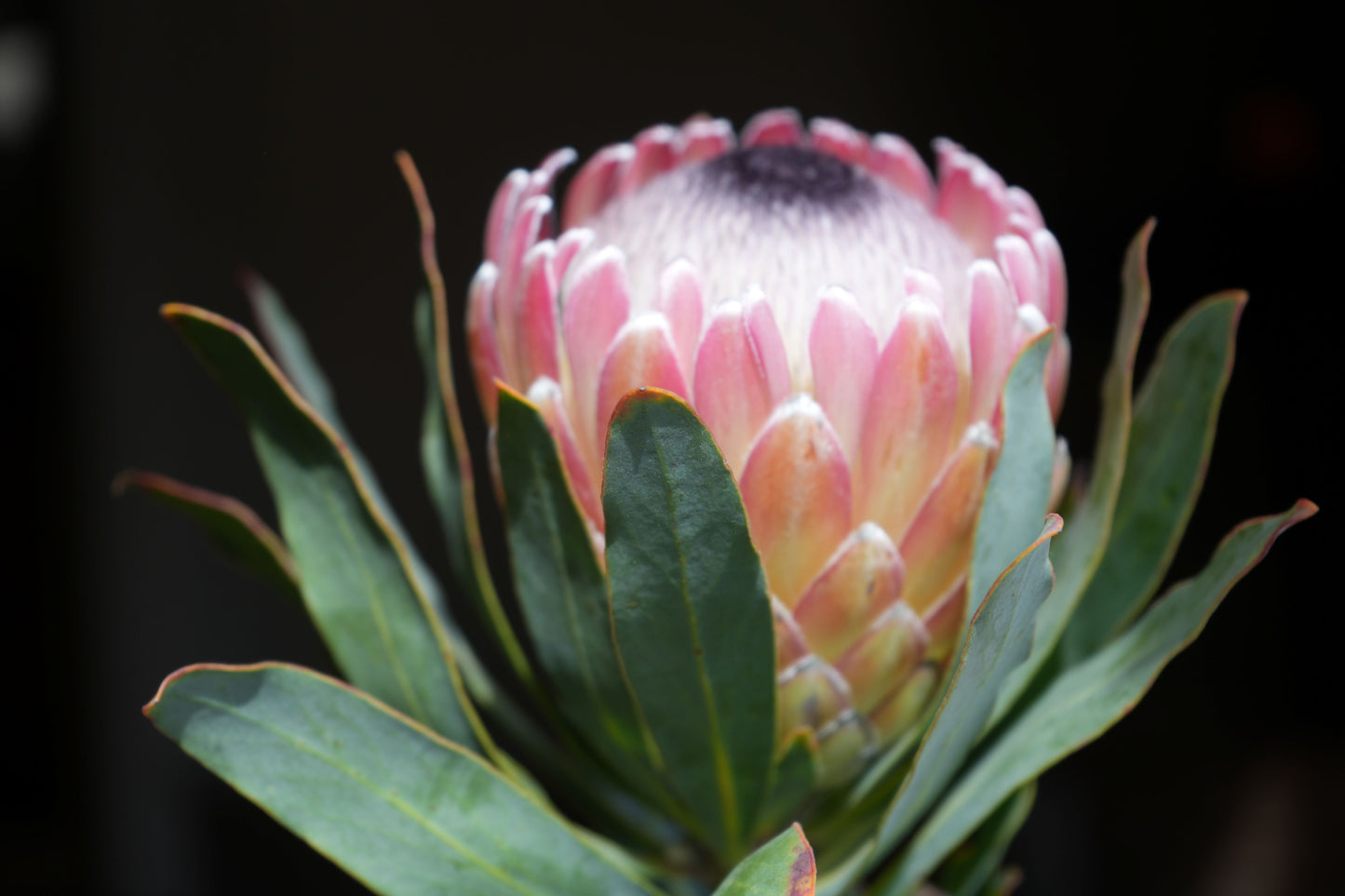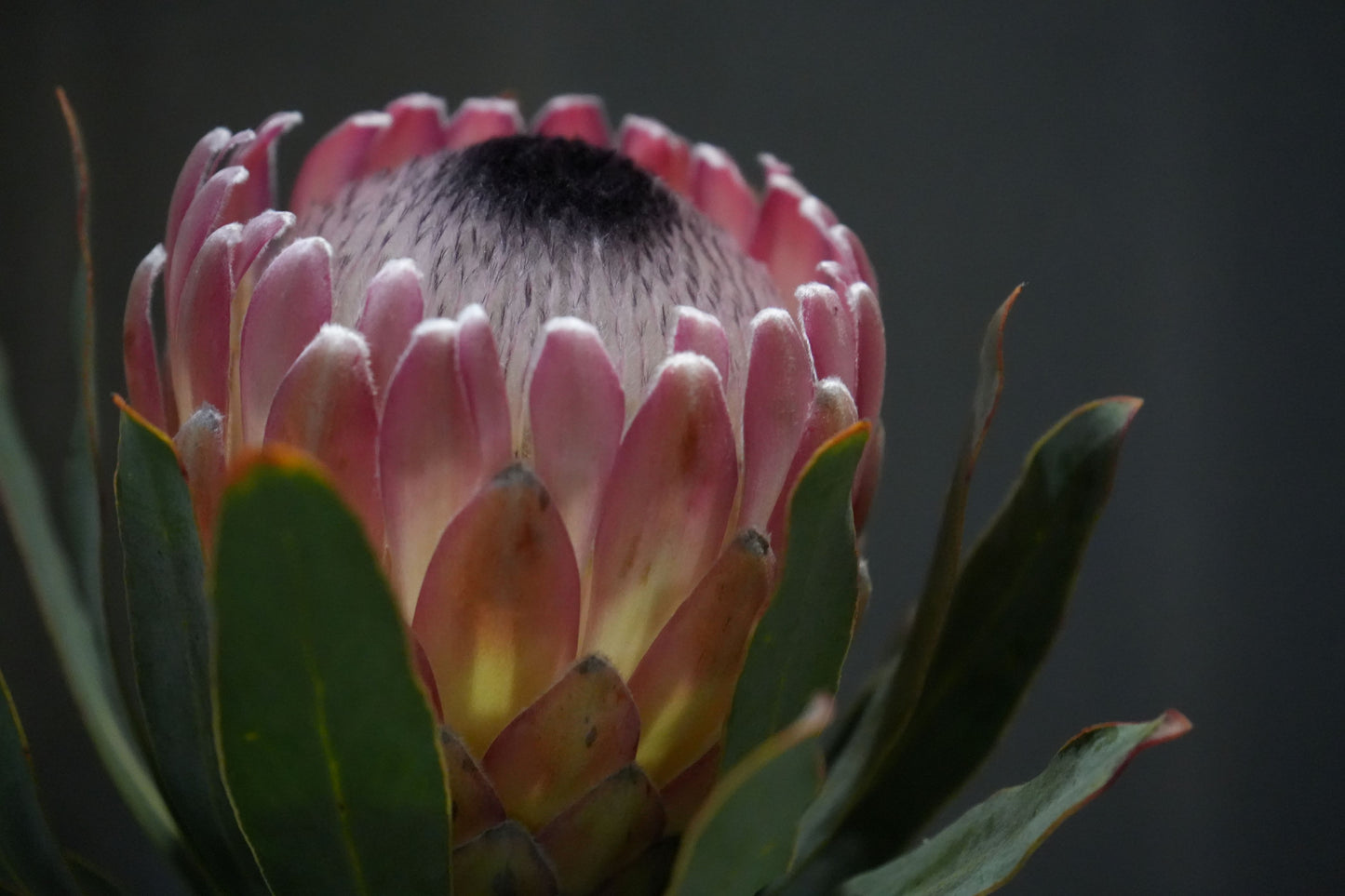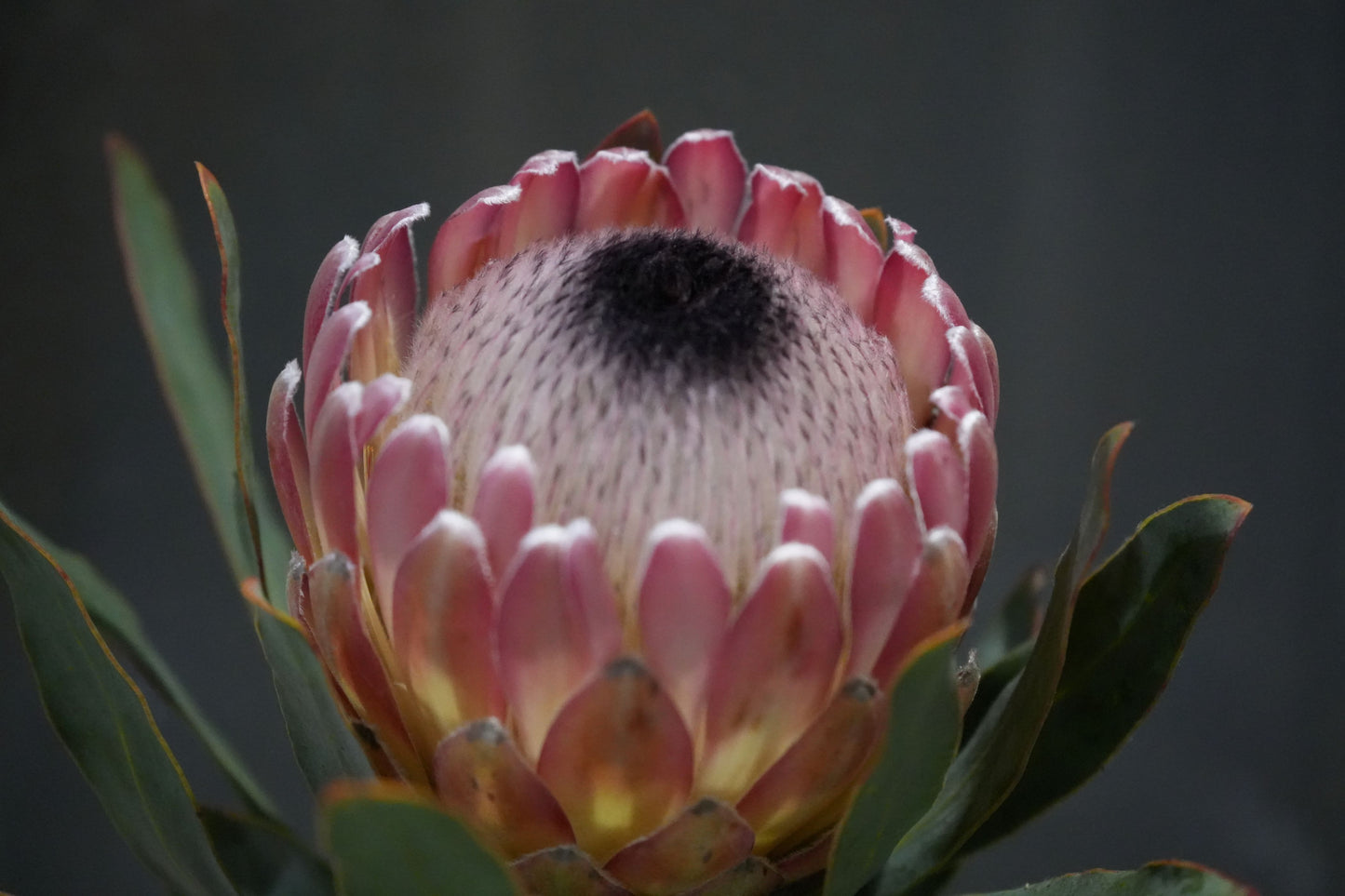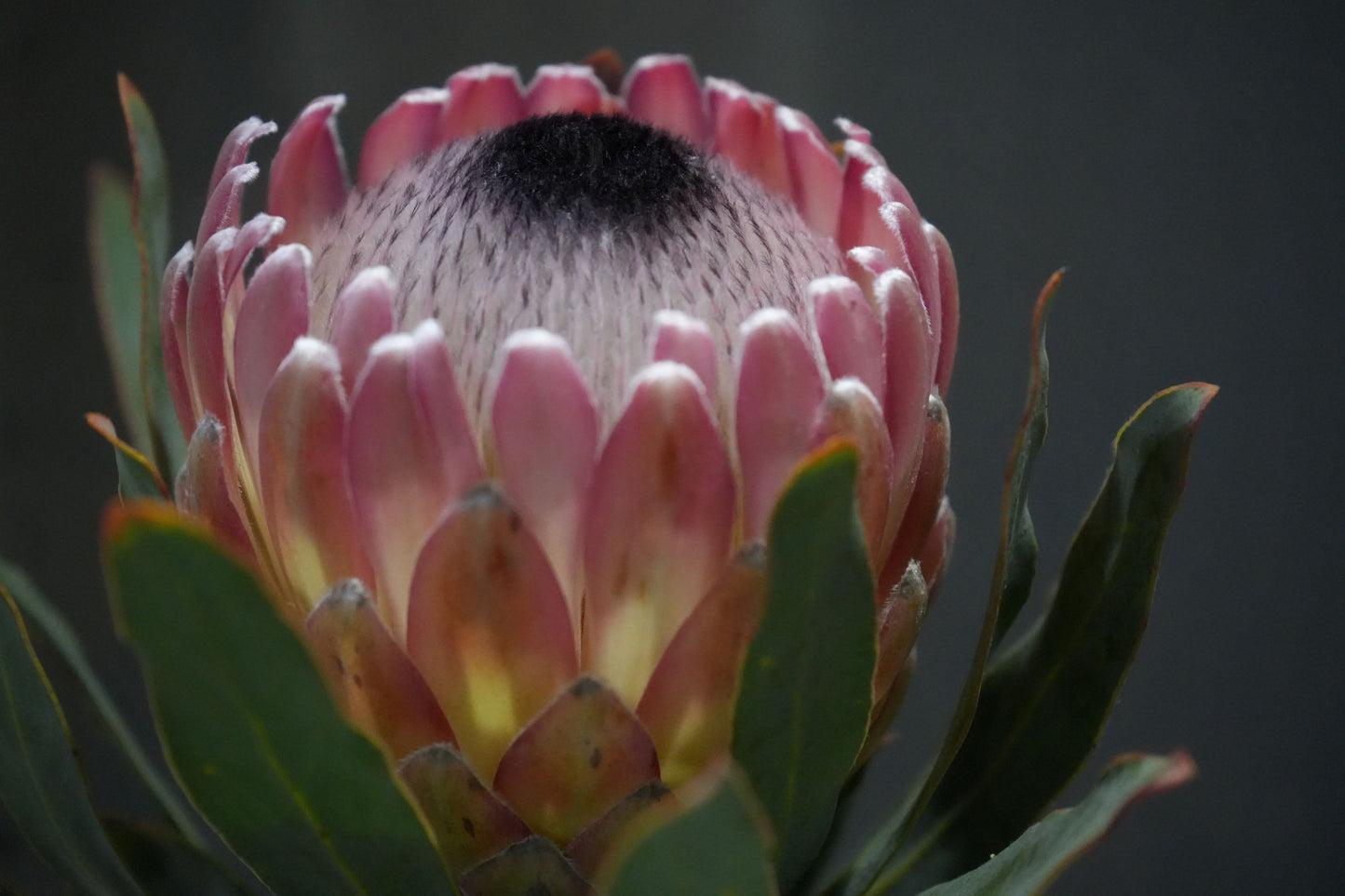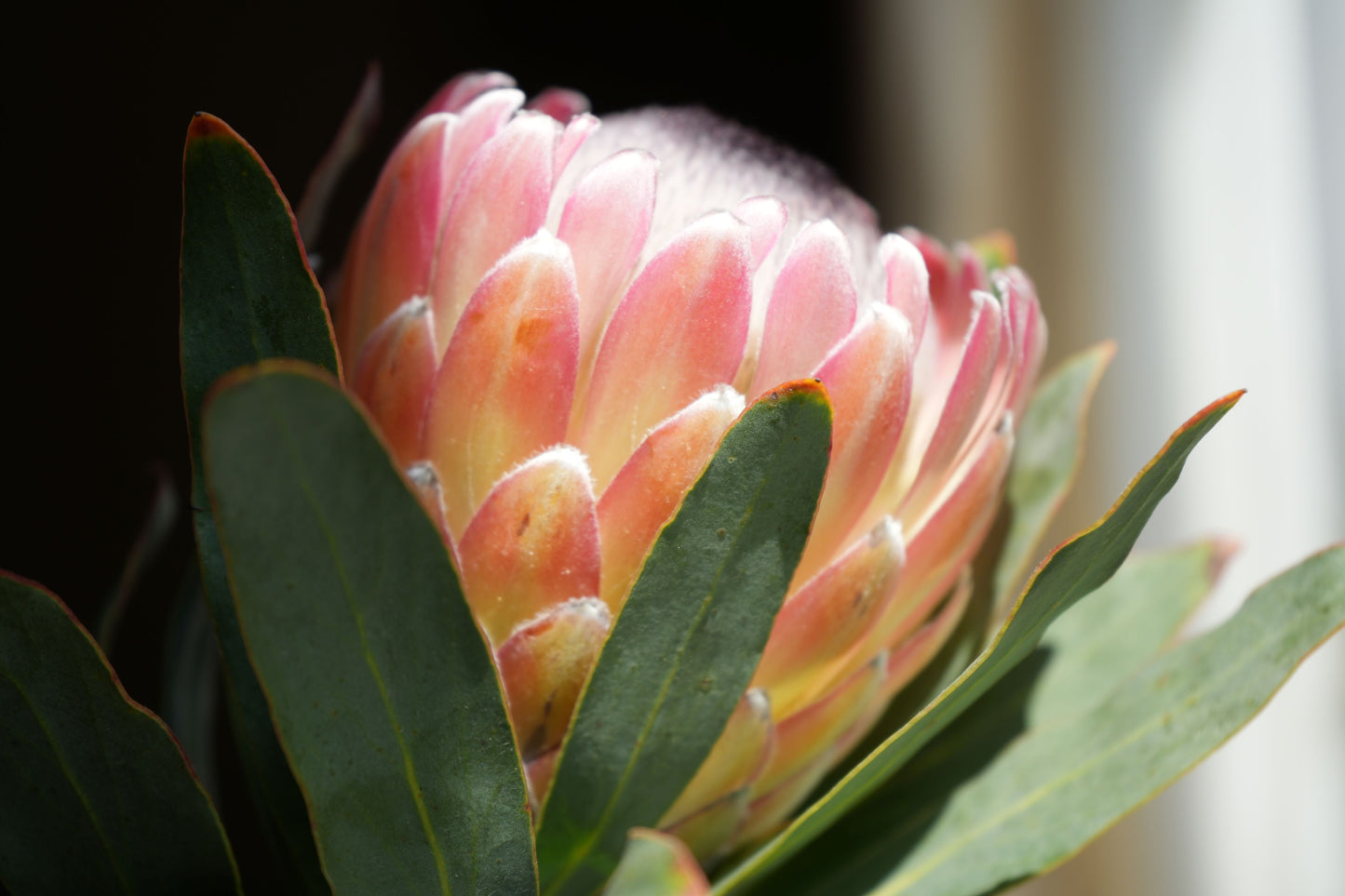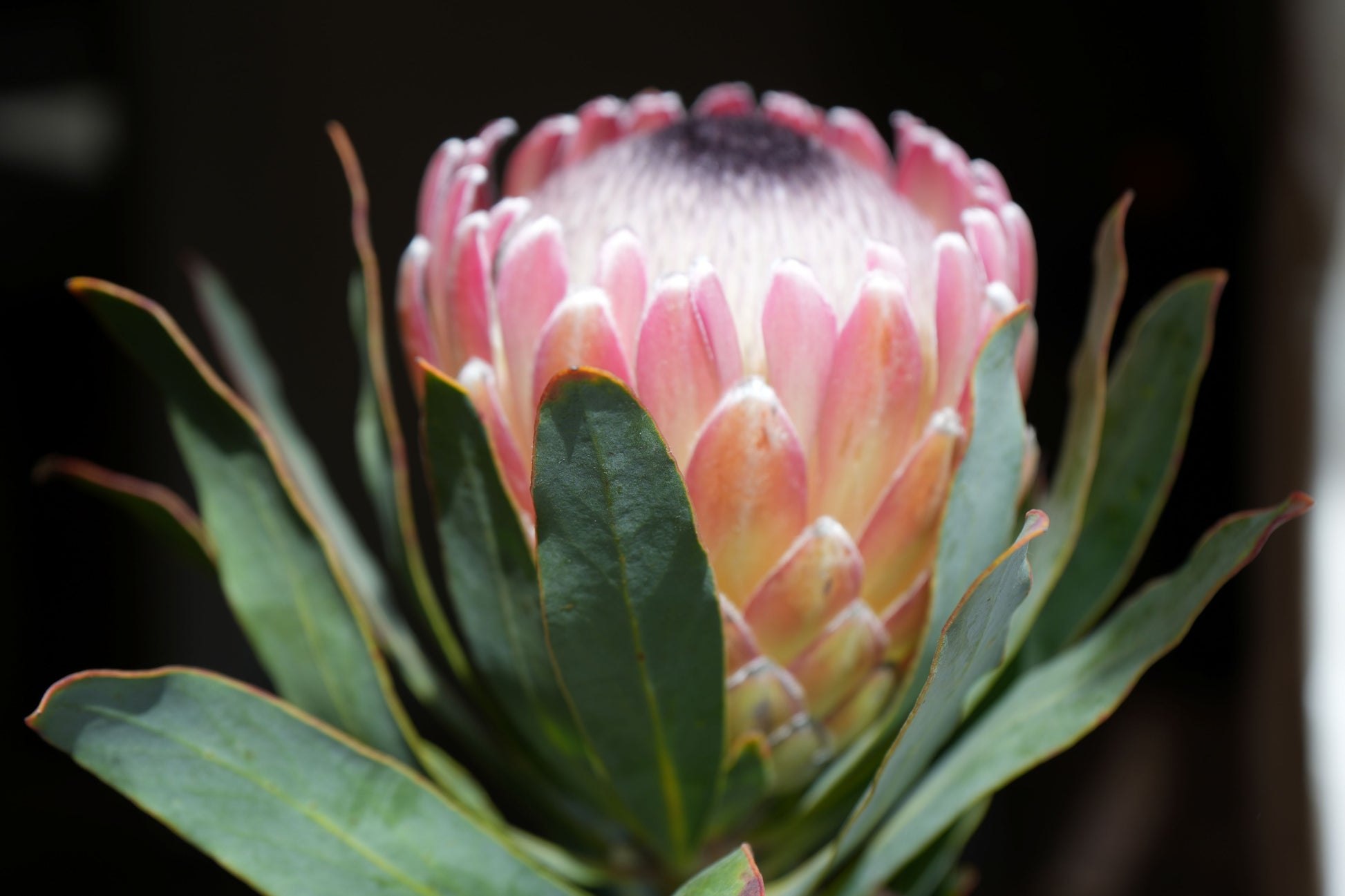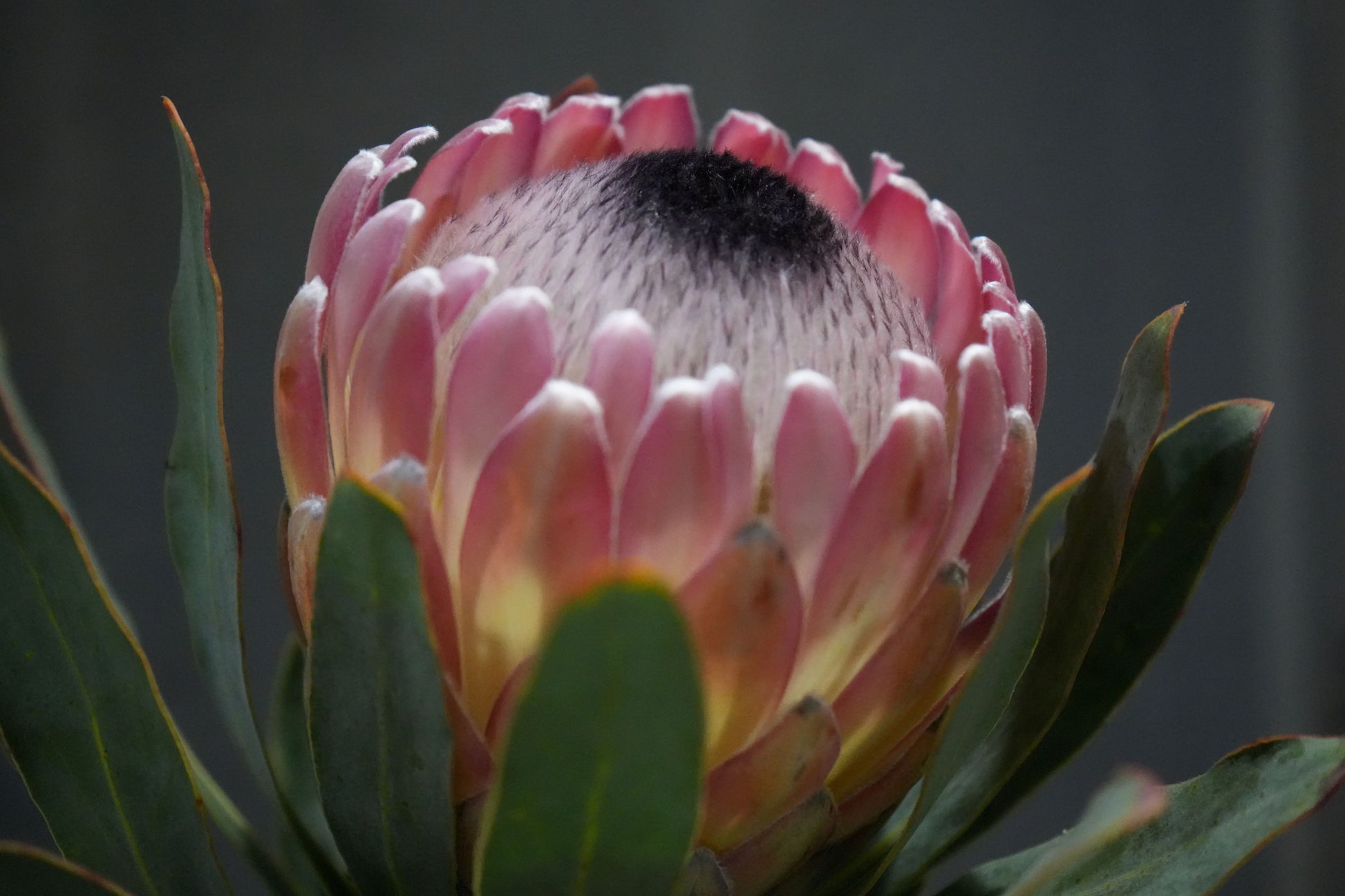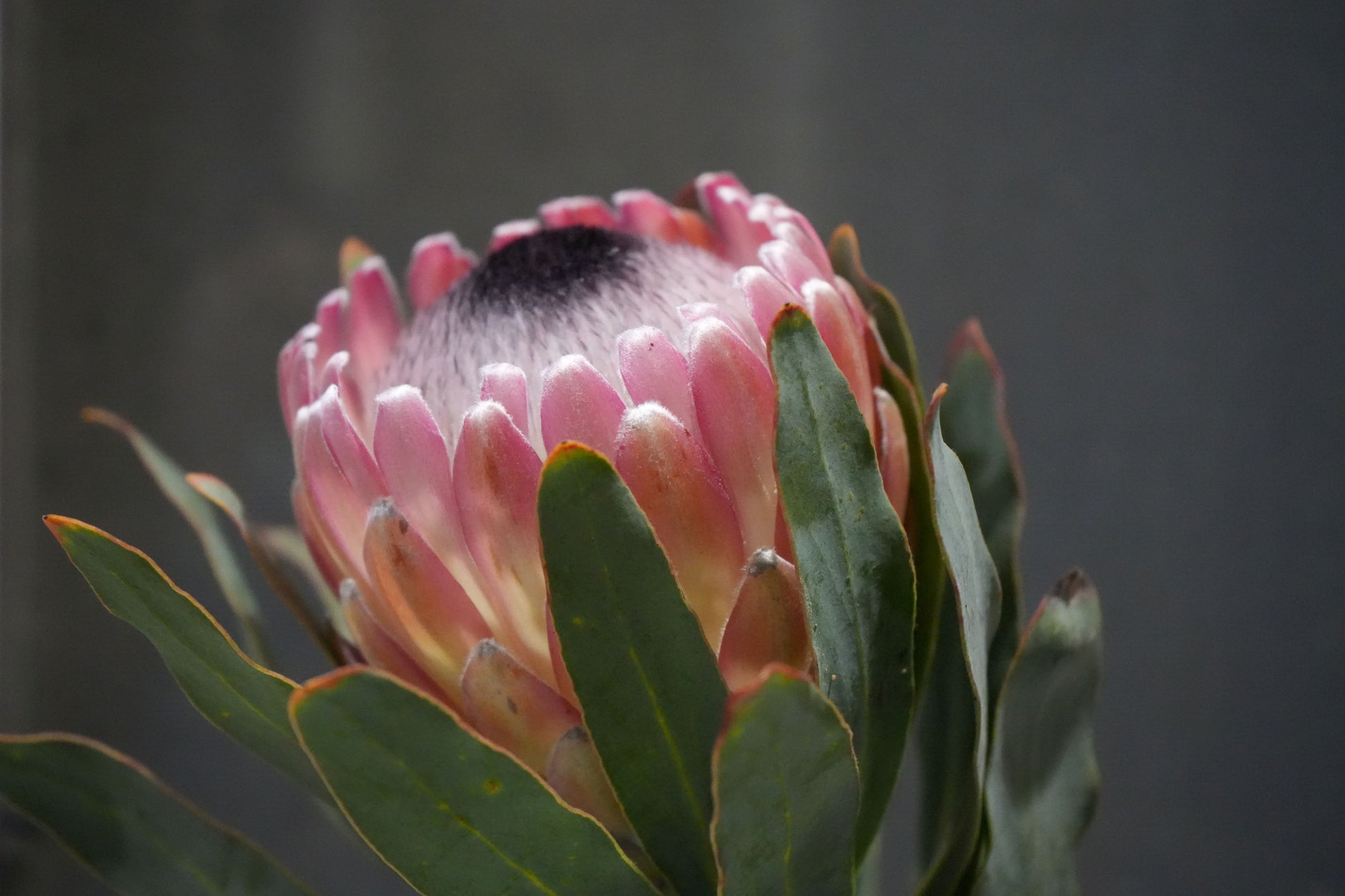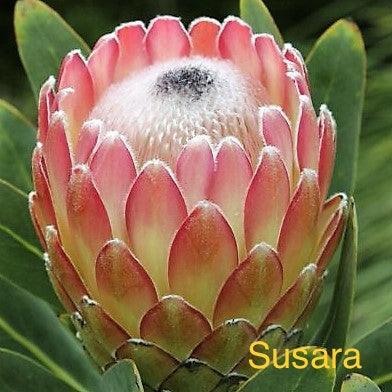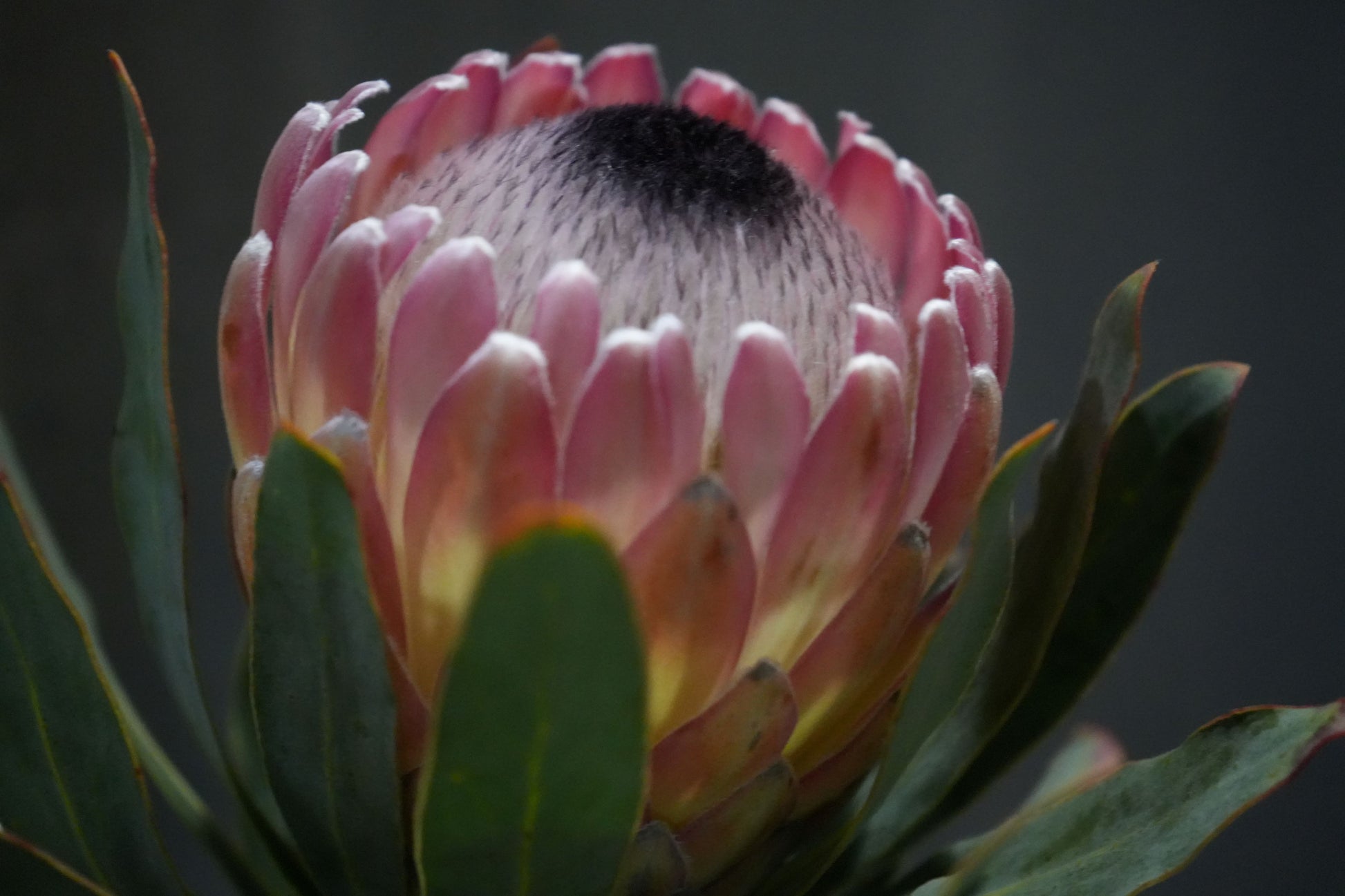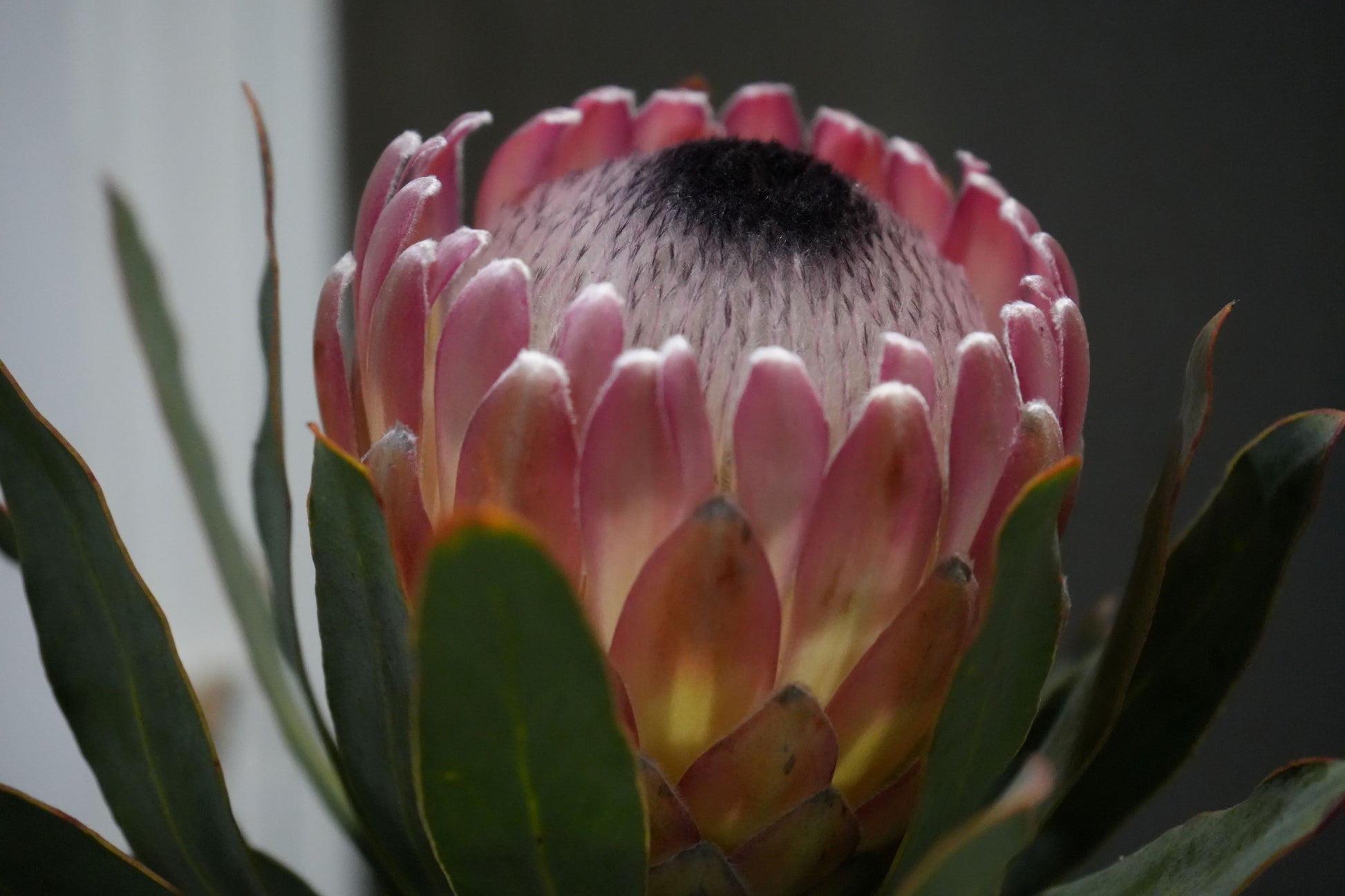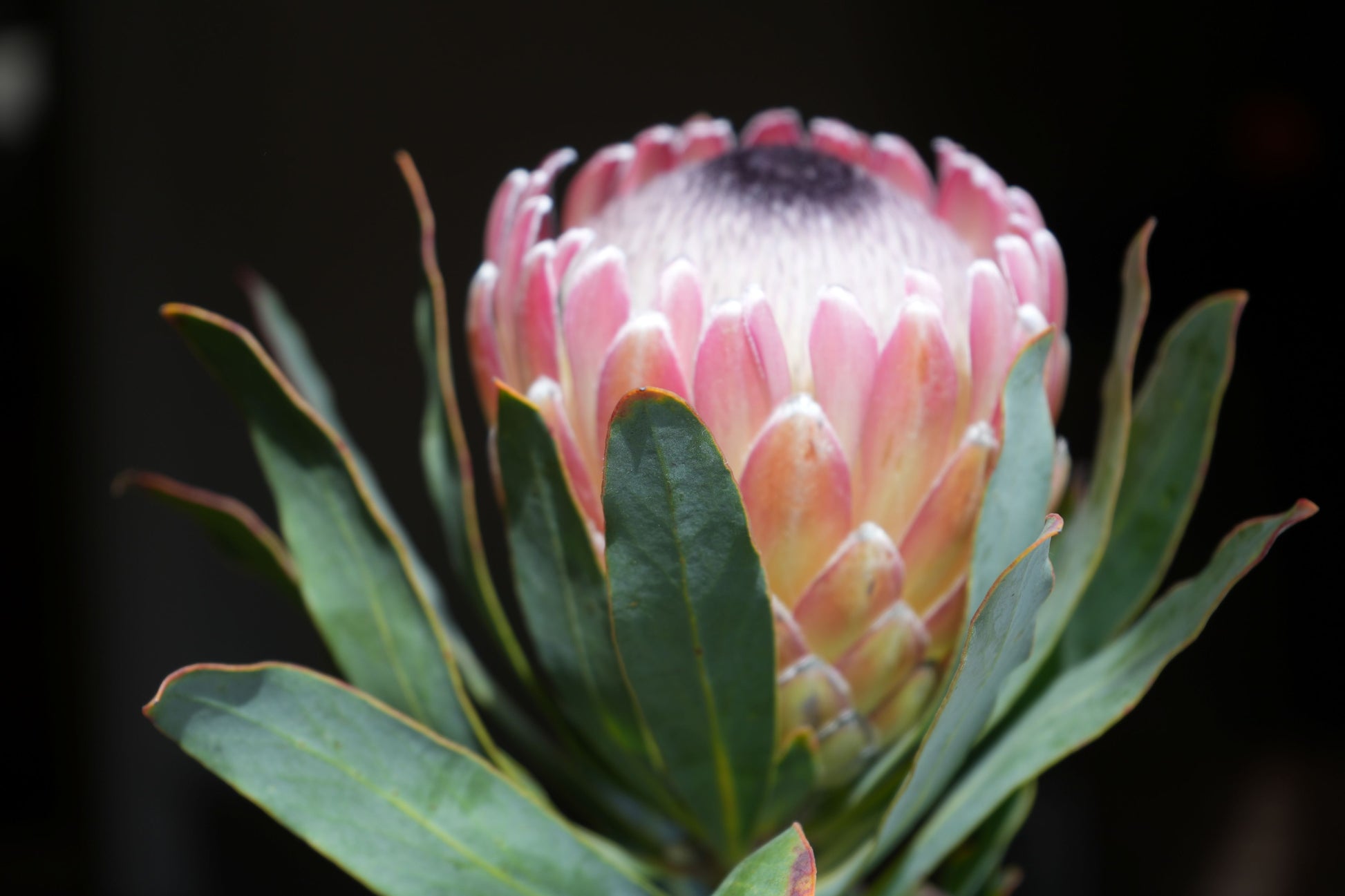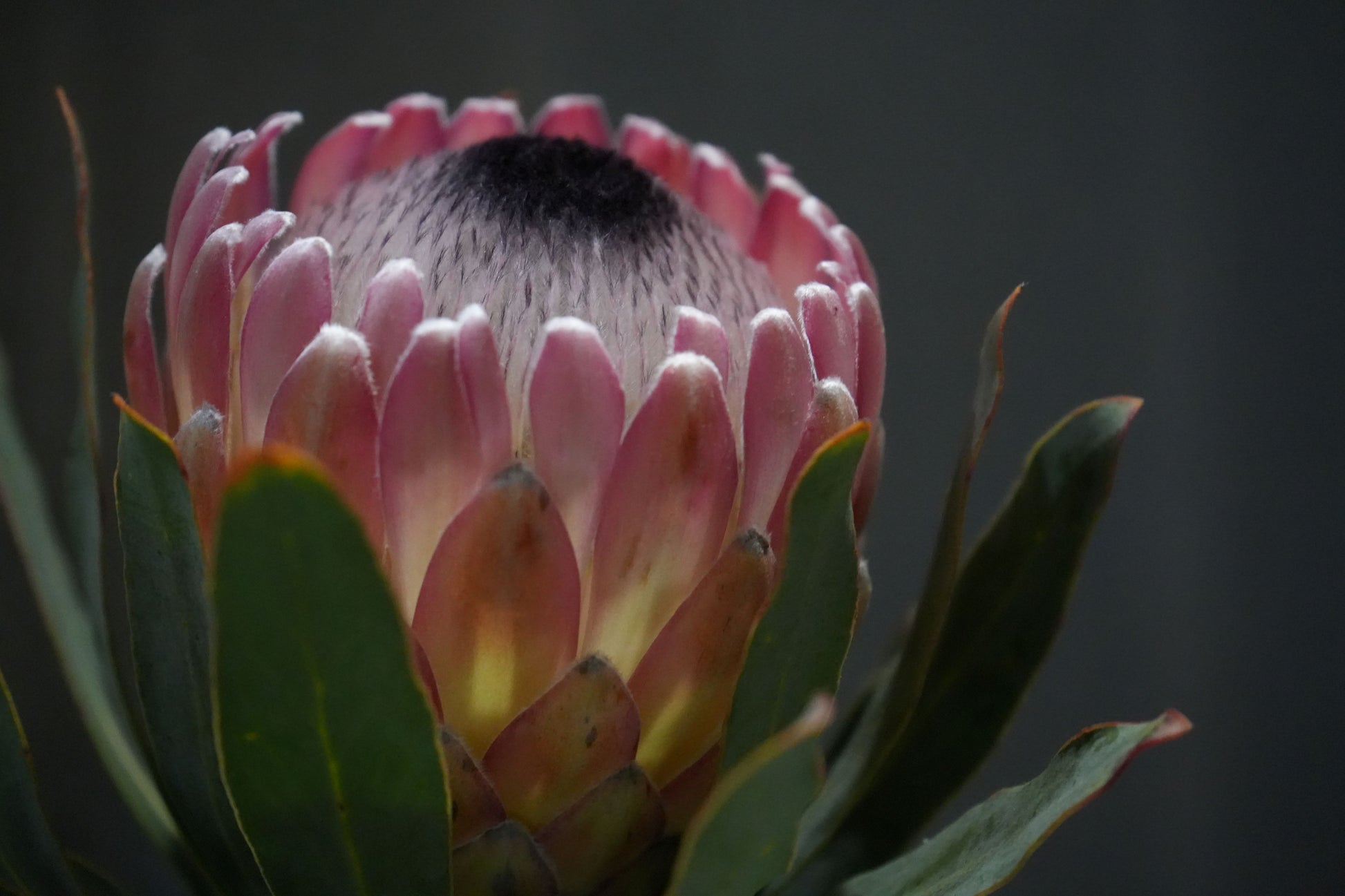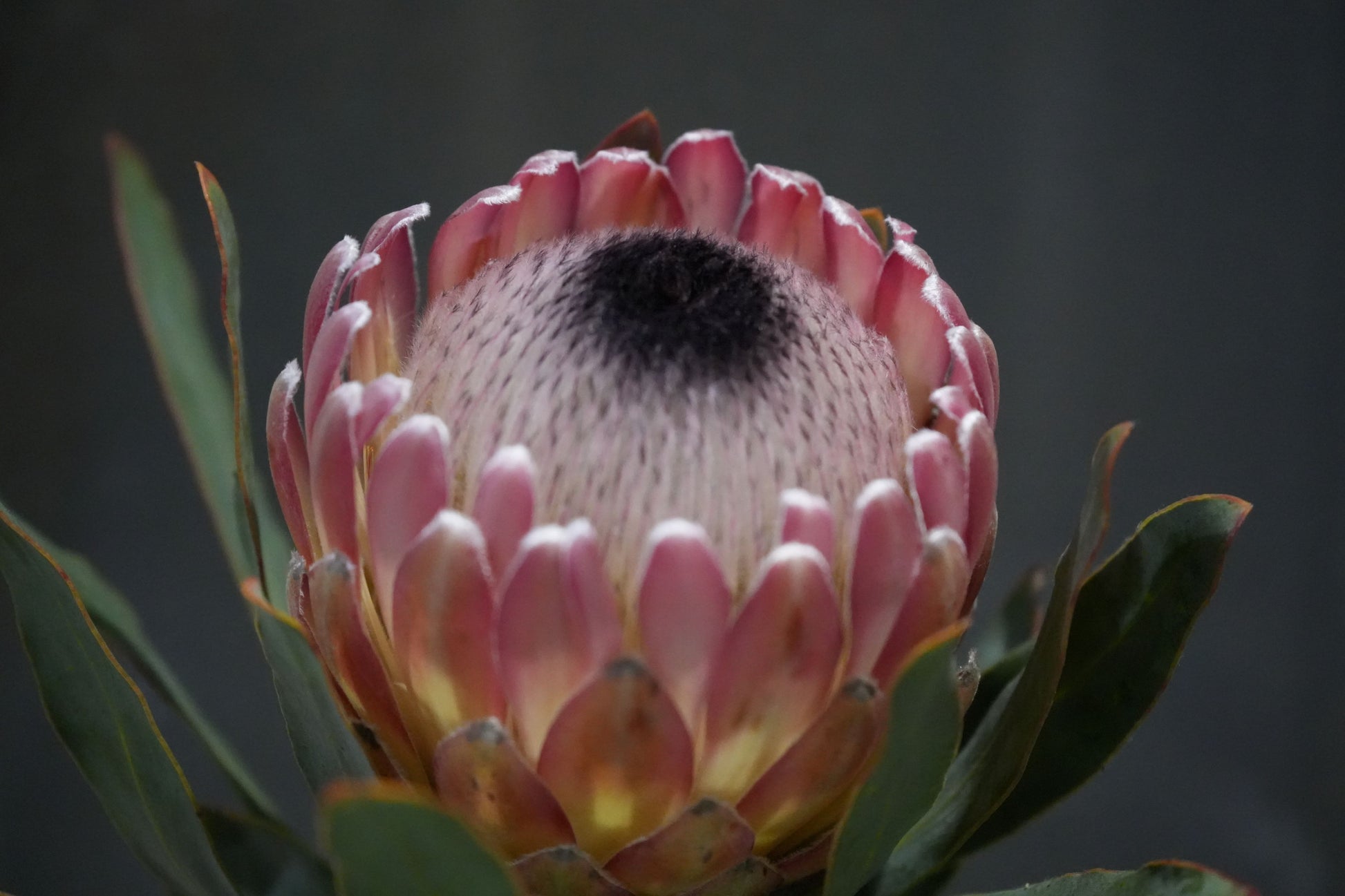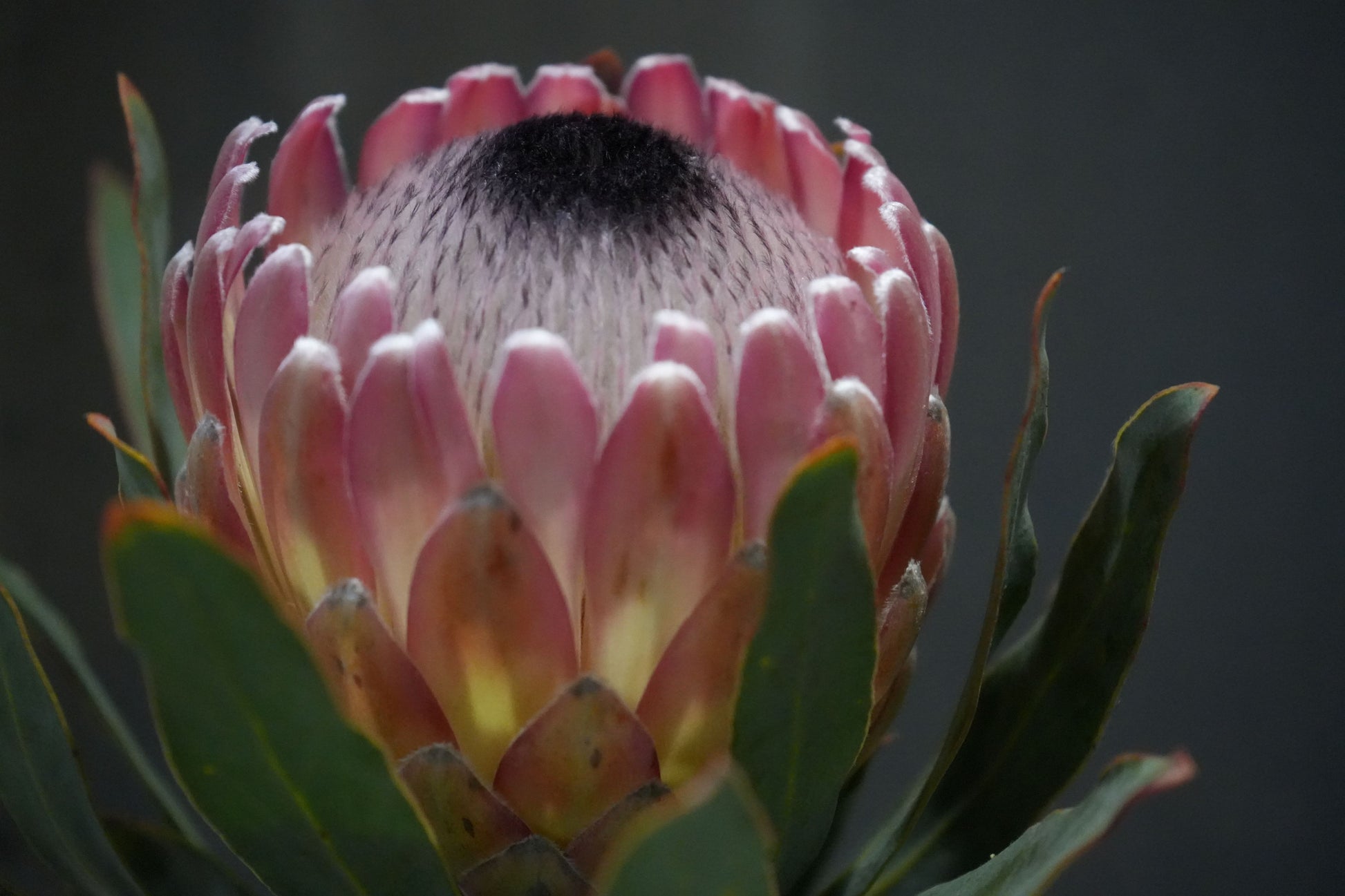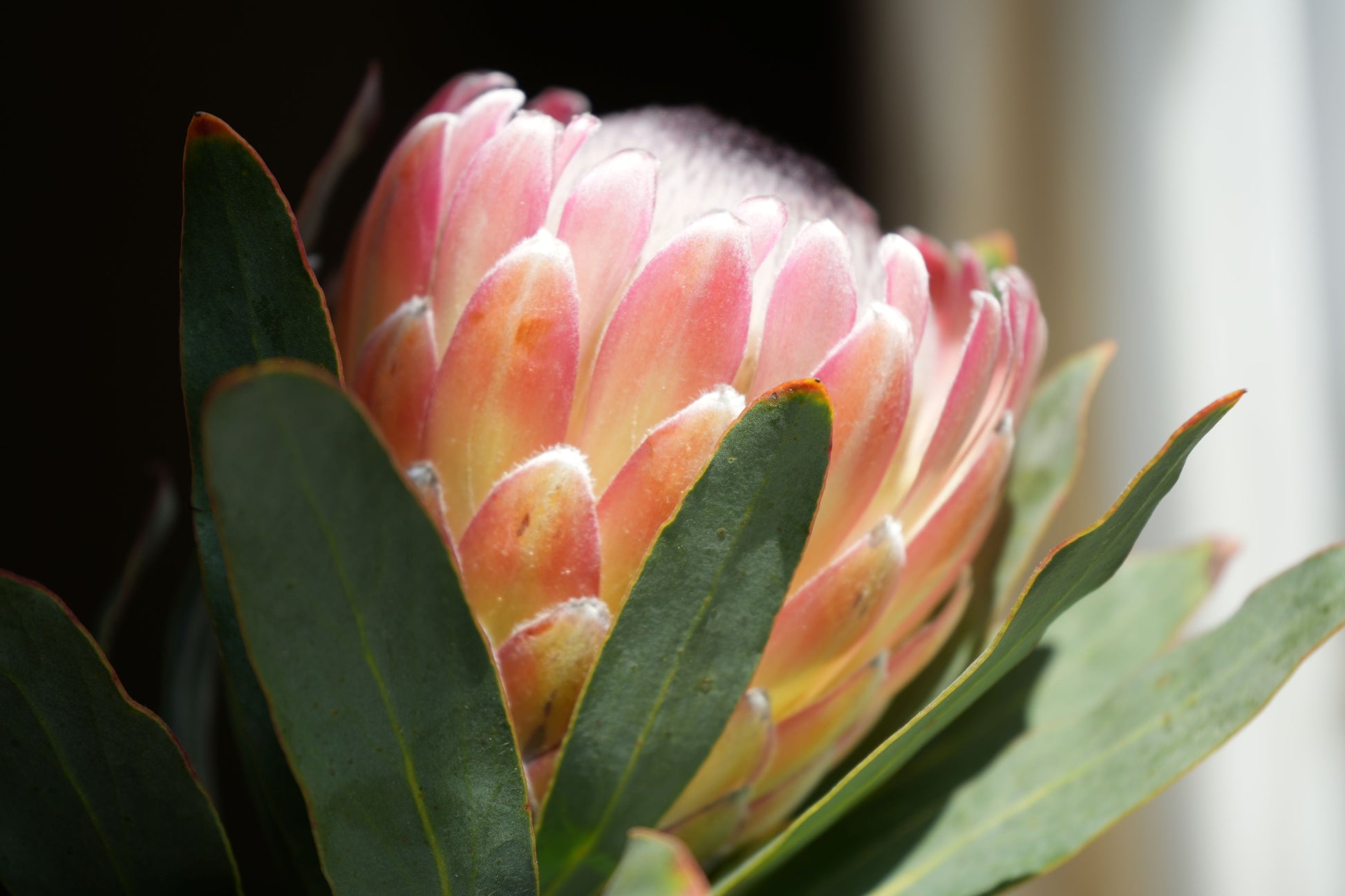Bonte Farm
Protea 'Susara': Compact, Heavy-Bloomiing Cherry-Pink Protea Shrub
Protea 'Susara': Compact, Heavy-Bloomiing Cherry-Pink Protea Shrub
Couldn't load pickup availability
💖 Protea 'Susara': The Compact, Heavy-Blooming Cherry-Pink Protea
The Protea 'Susara' is an award-winning, compact Protea hybrid highly valued for its dense, manageable size and its extraordinary ability to produce a high volume of flowers.1 This magnificent evergreen shrub delivers abundant, vibrant cherry-pink to deep coral flower heads, often with a silvery-white central tuft, creating a striking contrast against its fine, silver-tipped foliage. 'Susara' is an ideal, low-maintenance specimen for smaller landscapes, patio containers, and borders in Mediterranean and water-wise gardens.2 Its superior cold hardiness (for a Protea) and heavy bloom set make it a reliable choice, providing superb, long-lasting cut flowers and a consistent nectar source for hummingbirds.
Botanical Characteristics
|
Characteristic |
Detail |
|
Scientific Name |
Protea 'Susara' (Hybrid Cultivar) |
|
Common Names |
Susara Protea, Hybrid Protea. |
|
Growth Habit |
A dense, upright evergreen shrub with a naturally neat and compact habit, requiring minimal shaping. |
|
Foliage |
Features attractive, narrow, slightly silver-gray leaves that are tipped with black, adding visual interest. |
|
Flowers |
Medium-sized, distinctive goblet-shaped flower heads (bracts), typically 4–5 inches in diameter. Color is an intense cherry-pink to deep coral-red. |
|
Flowering Season |
Known for its heavy and extended bloom period, typically flowering profusely from late fall through spring, providing essential cool-season color. |
|
Cut Flower Use |
Excellent long-lasting cut flower, valued for its vibrant color and consistent size. |
Mature Size
'Susara' is one of the most compact and manageable Proteas available.3
- Height: Typically reaches a manageable 4–5 feet (1.2–1.5 meters) tall.
- Spread: Achieves a dense, comparable spread of 4–5 feet (1.2–1.5 meters) wide.
- Its compact size makes it versatile for prominent garden placement.4
USDA Hardiness Zone
This Protea hybrid exhibits improved cold tolerance and is best suited for USDA Hardiness Zones 8b–11. It thrives in mild, nearly frost-free coastal and Mediterranean climates where it receives full sun.5 It requires protection from prolonged freezing.
Cultivation and Care
|
Aspect |
Care Instructions |
|
Sunlight |
Requires full sun (a minimum of 6 hours of direct sun daily) and excellent air circulation to ensure strong stems and abundant blooms. |
|
Soil |
Essential: Demands perfectly well-drained, acidic soil (pH 5.0–6.0). Thrives in sandy, gritty, low-nutrient soils and must not sit in heavy, wet clay. |
|
Water |
Highly drought-tolerant once established. Water deeply during the first year. Mature plants require minimal summer water; overwatering is highly detrimental. |
|
Fertilizer |
Crucial: ABSOLUTELY AVOID all phosphorus fertilizers. Proteas are extremely phosphorus-sensitive. Use a specialized, low-phosphorus formula for Proteaceae, or none at all. |
|
Pruning |
Mandatory: The best practice is to harvest the flowers heavily, cutting the stems back into the leafy part of the shrub. This promotes fresh, dense growth and maximum flower count. |
Landscape Use
- Container Gardening: Its compact size is ideal for growing in large patio pots where drainage can be controlled.
- Specimen Plant: Used as a vibrant focal point in the front or middle of a border.
- Cut Flower Garden: Grown specifically for its professional-grade, intense cherry-pink floral stems.
- Xeriscape Design: A versatile, low-water, low-fertility plant for arid and Mediterranean-style gardens.
Wildlife Attraction
The nectar-filled flowers produce a copious amount of sweet nectar, making them extremely attractive to nectar-feeding birds, which serve as the primary pollinators. Planting 'Susara' is an excellent way to invite hummingbirds and native birds into the cool-season garden.
Pest and Disease Resistance
Protea 'Susara' is generally a hardy and robust plant when its crucial drainage needs are met.6 The most common issues are root rot and collar rot, which are caused by poor soil drainage or overwatering—this is the single most critical factor to avoid.
Propagation
To ensure the resulting plant maintains the specific, desirable traits, compact habit, and cherry-pink color of the 'Susara' cultivar, propagation must be conducted using vegetative methods. Semi-hardwood cuttings are the preferred and most reliable technique, generally taken during the warmer months. Propagation from seed is not used for maintaining cultivar identity.
Share
